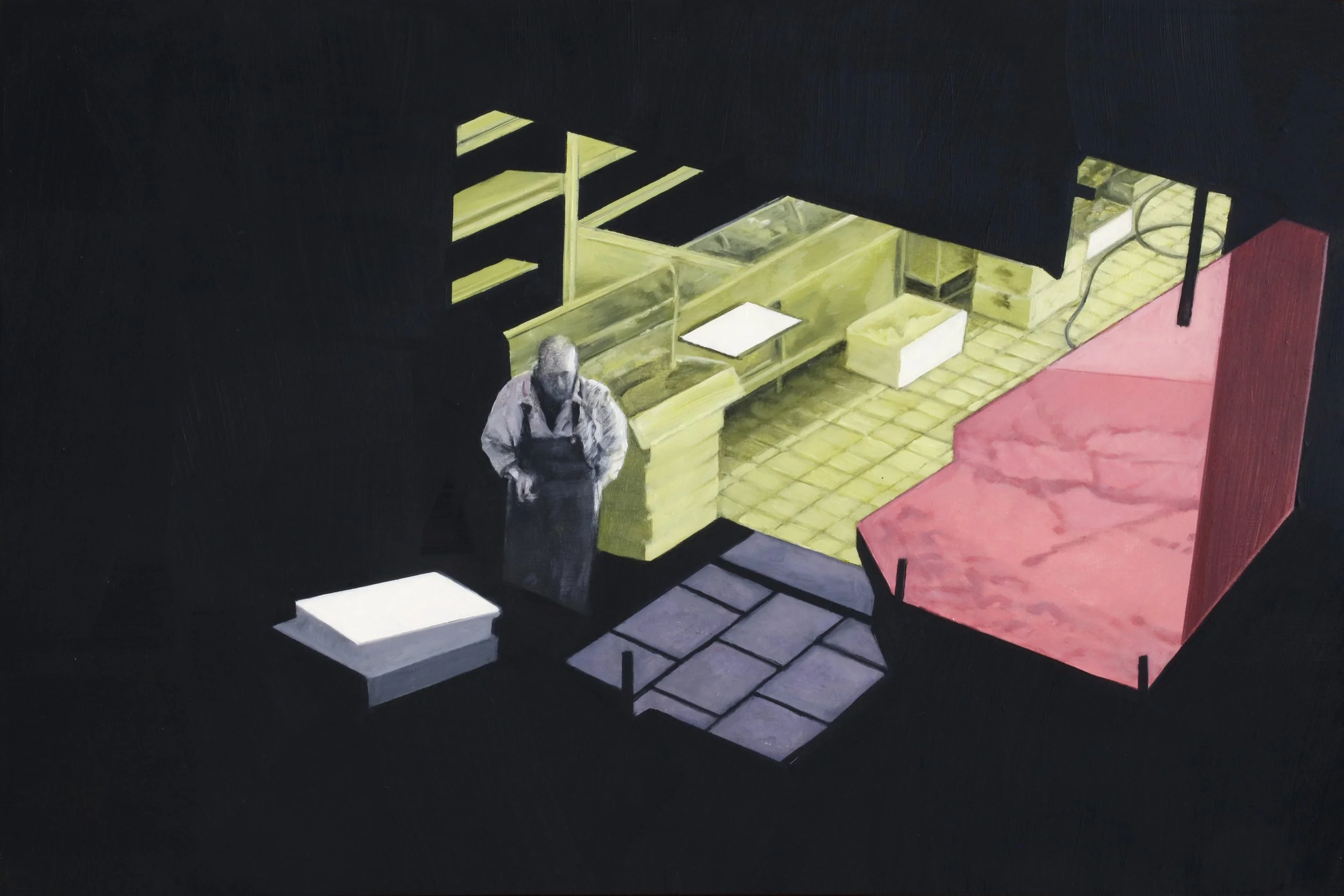









Your Custom Text Here
I’ve asked myself these two questions so many times over the years that I’ve adopted them as a kind of mantra. Whether I'm confronted with a random object or a body of artwork, I find satisfaction in parsing out the answers.
Identifying the thing—the “what is it?”—is often a blend of intuition and experience. Because these processes are personal and internal, I think of them as the organic component. The information we draw from—what we’ve seen, heard, or read—is filtered through layers unique to each of us. When we recall it, it’s already been shaped by those filters, and continues to evolve as new ones are added over time. As an artist, when I paint an object—say, a window—its meaning can shift wildly depending on the viewer. I might know (or think I know) what a window represents, but your interpretation might be influenced by your culture, gender, religion, politics, and countless other factors. The act of defining “what it is” is never entirely objective.
Understanding “how it works” usually requires a narrative. Because this aspect involves data gathering and distribution, I consider it the external component. Applying a system to the unknowable is comforting—I've done it many times. One of my early favorite systems is a diagram of the relationship between the conscious and unconscious mind—specifically, Jung’s Collective Unconscious. That framework helped me understand the origins of artistic invention, and gave me language to describe my own work. These days, I’m drawn to the concept of spacetime. I can’t claim to have fully grasped the physics, but I get the gist: everything that has happened, is happening, or will happen, is happening all at once. It’s a useful metaphor for understanding artistic process, perception, and meaning.
Of course, getting the “what is it?” part wrong can skew the “how does it work?” part—and vice versa. But I’m prepared for the long game.
I’ve asked myself these two questions so many times over the years that I’ve adopted them as a kind of mantra. Whether I'm confronted with a random object or a body of artwork, I find satisfaction in parsing out the answers.
Identifying the thing—the “what is it?”—is often a blend of intuition and experience. Because these processes are personal and internal, I think of them as the organic component. The information we draw from—what we’ve seen, heard, or read—is filtered through layers unique to each of us. When we recall it, it’s already been shaped by those filters, and continues to evolve as new ones are added over time. As an artist, when I paint an object—say, a window—its meaning can shift wildly depending on the viewer. I might know (or think I know) what a window represents, but your interpretation might be influenced by your culture, gender, religion, politics, and countless other factors. The act of defining “what it is” is never entirely objective.
Understanding “how it works” usually requires a narrative. Because this aspect involves data gathering and distribution, I consider it the external component. Applying a system to the unknowable is comforting—I've done it many times. One of my early favorite systems is a diagram of the relationship between the conscious and unconscious mind—specifically, Jung’s Collective Unconscious. That framework helped me understand the origins of artistic invention, and gave me language to describe my own work. These days, I’m drawn to the concept of spacetime. I can’t claim to have fully grasped the physics, but I get the gist: everything that has happened, is happening, or will happen, is happening all at once. It’s a useful metaphor for understanding artistic process, perception, and meaning.
Of course, getting the “what is it?” part wrong can skew the “how does it work?” part—and vice versa. But I’m prepared for the long game.
Trapeze I, oil on panel, 18 x 12 inches, 2025
Trapeze II, oil on panel, 18 x 12 inches, 2025
Trapeze III, oil on panel, 18 x 12 inches, 2025
Trapeze IV, oil on panel, 18 x 12 inches, 2025
Rue Cler II, oil on panel, 12 × 18 inches, 2025
Rue Cler III, oil on panel, 12 × 18 inches, 2025
Trapeze I, monoprint, 18 × 12 inches, 2025
Trapeze II, monoprint, 18 × 12 inches, 2025
Trapeze III, monoprint, 18 × 12 inches, 2025
Trapeze IV, monoprint, 18 × 12 inches, 2025